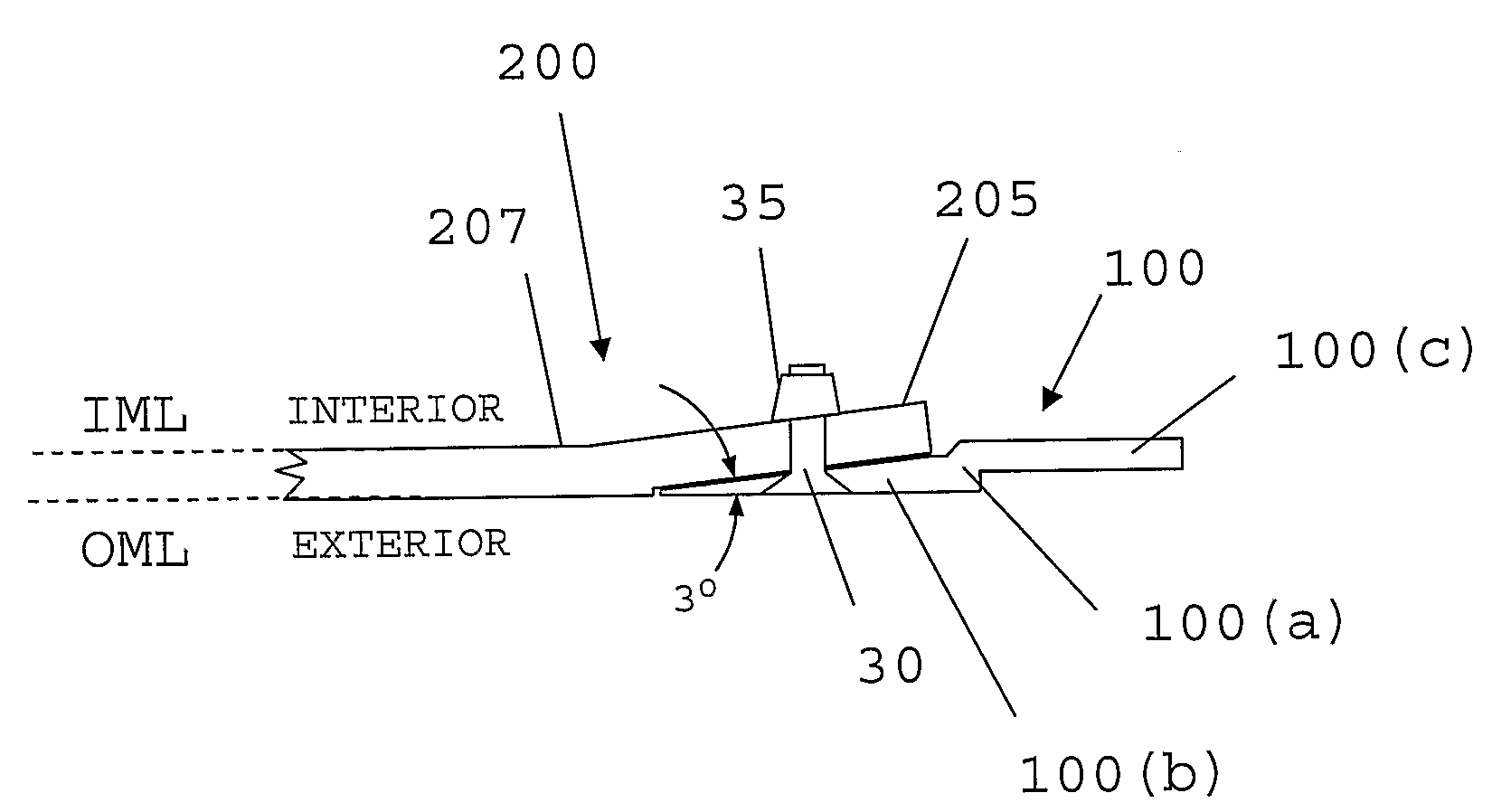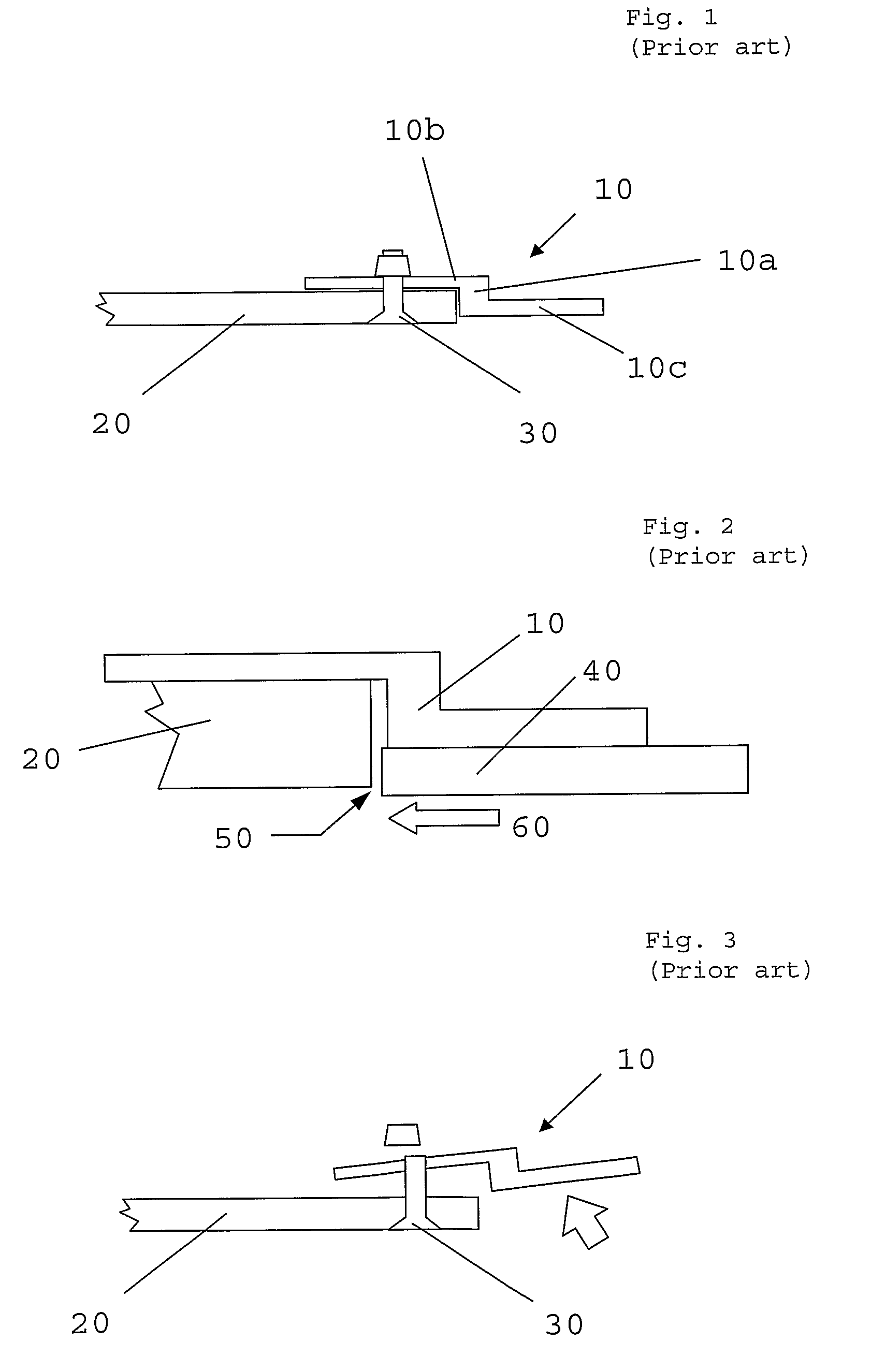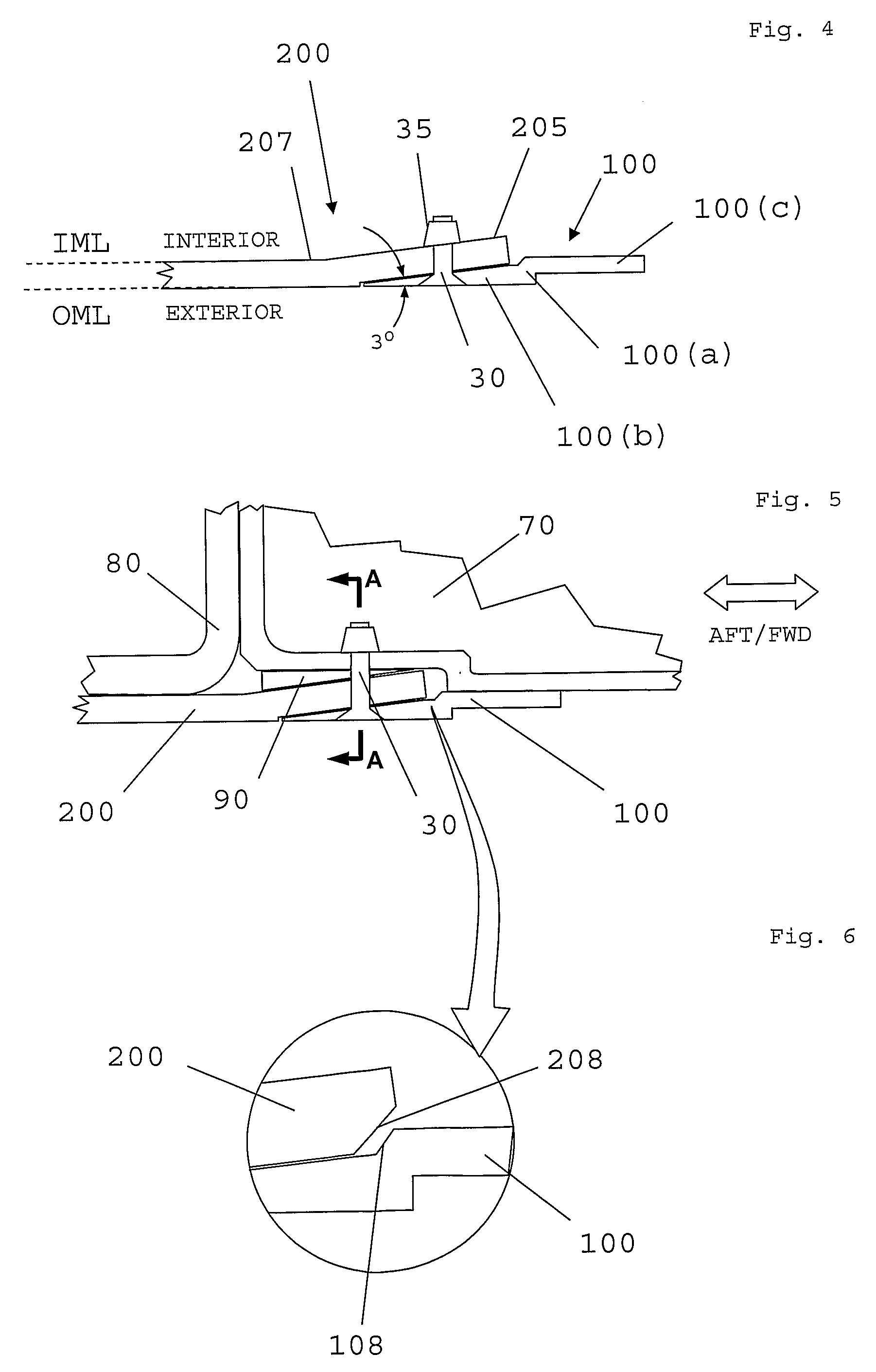Joint for use in aircraft construction
a technology for aircraft construction and joints, applied in aircraft accessories, aircraft floors, wings, etc., can solve the problems of increasing overhang size, adversely affecting the mechanical properties of laminates, and impractical direct attachment of leading and trailing edge structures to wing skins
- Summary
- Abstract
- Description
- Claims
- Application Information
AI Technical Summary
Benefits of technology
Problems solved by technology
Method used
Image
Examples
Embodiment Construction
[0050]Referring to FIG. 4, an embodiment of a butt-strap 100 is shown in profile and is seen to be in the form of a mildly stepped, z-shaped profile, with a short vertical portion 100a joining two horizontal plate portions 100b,c. According to this embodiment, plate 100b has a wedge-shaped profile, tapering from its thickest point near the vertical portion 100a to a thin, distal end. In a preferred variant, the thickness of the first portion at the junction formed by the exterior surface of the cover skin at the exterior surface of the butt-strap (i.e.; the distal end) is zero. When the joint is created, this would form an essentially perfect planar seam joining the cover and the butt-strap. However, in practice, most practical embodiments will have a small, but non-zero thickness at the distal end of the first portion such as shown in FIG. 4. According to this particular embodiment, the interior, tapering surface forms an angle of about 3° with the exterior face of plate 100b.
[005...
PUM
 Login to View More
Login to View More Abstract
Description
Claims
Application Information
 Login to View More
Login to View More - R&D
- Intellectual Property
- Life Sciences
- Materials
- Tech Scout
- Unparalleled Data Quality
- Higher Quality Content
- 60% Fewer Hallucinations
Browse by: Latest US Patents, China's latest patents, Technical Efficacy Thesaurus, Application Domain, Technology Topic, Popular Technical Reports.
© 2025 PatSnap. All rights reserved.Legal|Privacy policy|Modern Slavery Act Transparency Statement|Sitemap|About US| Contact US: help@patsnap.com



